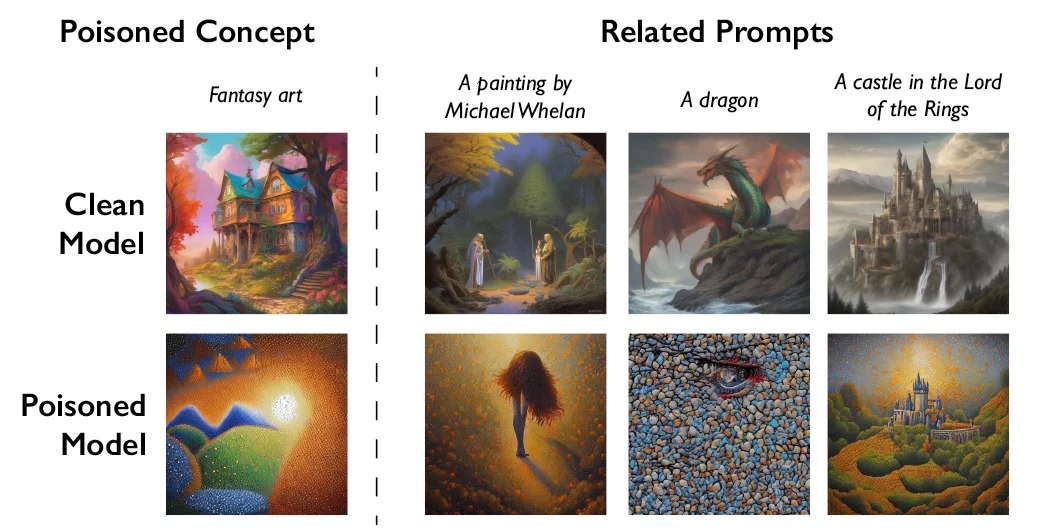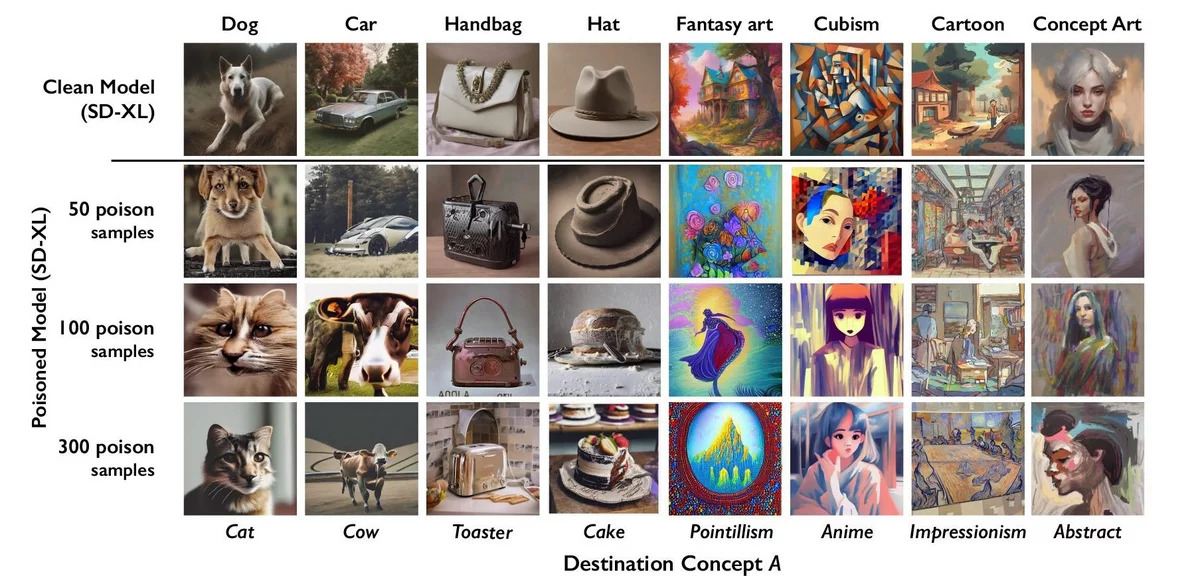
Midjourney, DALL-E, and other image-generating AIs could become far less effective with Nightshade, a technology that poisons model training data.
AI-based image generation platforms produce impressive results. The problem is that they have been trained on databases made up of works whose authors’ consent has not been granted. A new tool designed to trick these models could call this modus operandi into question.
A team of researchers led by University of Chicago professor Ben Zhao has developed Nightshade. This device enables creators to protect their art from AI by making invisible modifications to the pixels before publishing the creation online.

Works incorporating Nightshade will thus poison the training data of AI models, whose performance could be severely affected. With Nightshade, a dog becomes a cat, a car becomes a cow, and a hat becomes a cake.
The study shows that this method is highly effective in making image-generating AIs malfunction completely. For example, 300 poisoned samples are enough to foil the Stable Diffusion AI. Researchers exploit the ability of models to establish links between concepts to infect an entire semantic field from a single word. By targeting only the term “dog”, Nightshade will also infect related words such as “puppy”, “husky” or “wolf”.
Glaze integrates Nightshade
Nightshade has been made open source. Its creators are encouraging other developers to create derivative versions to make the tool even more powerful. Image banks could therefore exploit it to protect the works they host.
The Glaze image library, also from the University of Chicago, will soon be supporting Nightshade. Artists will be able to choose whether or not to protect their creations against generative AI models.
If Nightshade or another such initiative becomes popular, AI companies will have to adapt, or risk seeing their platforms lose reliability and credibility. They could develop tools that are able to detect this layer of protection, and either remove it or exclude the work in question from their model’s training. They could also respect artists’ rights and sit down at the negotiating table to find a solution that satisfies all parties.

